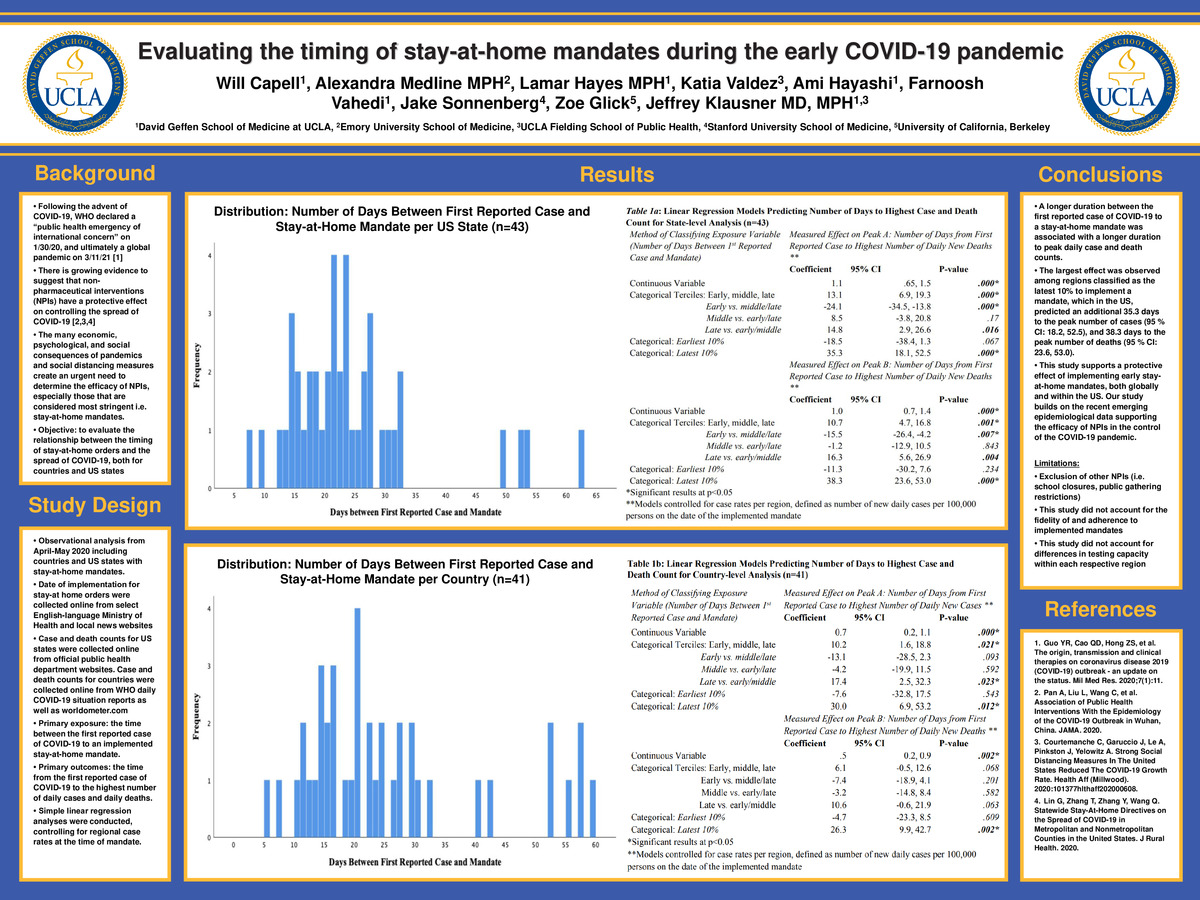-
Author
William Capell -
Co-author
Medline, Alexandra, MPH; Hayes, Lamar, MPH; Valdez, Katia; Hayashi, Ami; Vahedi, Farnoosh; Sonnenberg, Jake; Glick, Zoe
-
Title
Evaluating the timing of stay-at-home mandates during the early COVID-19 pandemic
-
Abstract
BACKGROUND The many economic, psychological, and social consequences of pandemics and social distancing measures create an urgent need to determine the efficacy of non-pharmaceutical interventions (NPIs), especially those considered most stringent such as stay-at-home mandates.
METHODS This observational analysis from April to May 2020 included countries and US states with known stay-at-home mandates. The primary exposure was the time between the first reported case of COVID-19 to an implemented stay-at-home mandate. The primary outcomes were the time from the first reported case of COVID-19 to the highest number of daily cases and daily deaths. Simple linear regression analyses were conducted, controlling for regional case rates at the time of mandate.
RESULTS A longer duration between the first reported case of COVID-19 to a stay-at-home mandate was associated with a longer time to reach peak daily case and death counts. The largest effect was observed among regions classified as the latest 10% to implement a mandate, which in the US, predicted an additional 35.3 days to the peak number of cases (95 % CI: 18.2, 52.5), and 38.3 days to the peak number of deaths (95 % CI: 23.6, 53.0).
CONCLUSIONS This study supports the potential benefit of earlier stay-at-home mandates. Regions where mandates were implemented late experienced a prolonged duration to reaching both peak daily case and death counts.
-
College
ACC
-
Zoom
-
PDF

